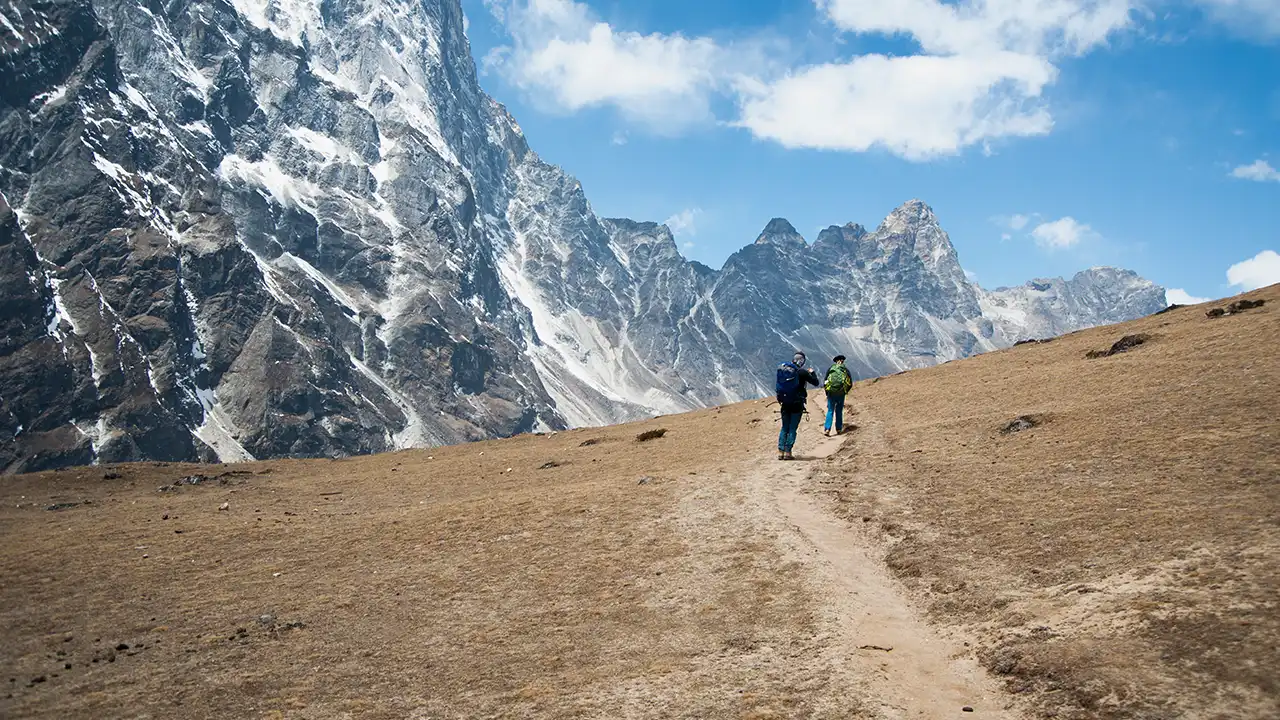In the barren beauty of Ladakh, where every mountain feels sacred and every silence feels complete, rises Kang Yatse II, a majestic peak that dominates the skyline beyond the Markha Valley. At 6,250 meters, Kang Yatse II offers a rare mix of high-altitude thrill, Himalayan serenity, and achievable summiting.
This expedition is more than just a climb. It’s a journey into one of the most surreal landscapes in India. You walk through villages with no phone signals, cross rivers fed by ancient glaciers, sleep under an infinite galaxy, and slowly ascend to a summit that shows you Ladakh from the sky.
Why choose the Kang Yatse Peak Expedition?
Because it’s a Himalayan 6000-er that feels personal, achievable, and spiritual all at once. Kang Yatse II is ideal for trekkers who have done moderate to high-altitude treks and now want to step into the world of expedition-style climbs.
Unlike many technical peaks, Kang Yatse II doesn’t require ropework or prior mountaineering certification. But it still offers everything you dream of snow climbs, glacier walks, a summit push that starts in darkness, and views that silence even the most restless heart, and because the climb follows the legendary Markha Valley trail, you also get Ladakh’s culture, monasteries, grazing lands, and rare wildlife as part of your journey.
Trek Highlights
- Markha Valley
Walk through timeless Ladakhi villages like Skiu, Markha, and Hankar. Camp near rivers, speak with locals, and feel the rhythm of a valley untouched by time.
- Nimaling Meadows
A vast alpine grazing ground surrounded by Kang Yatse and other snow-covered giants. Horses and yaks graze peacefully as clouds drift slowly above.
- Kongmaru La Pass
Cross this high-altitude pass at 5,265 meters for incredible views of the Karakoram and Zanskar ranges.
- Kang Yatse Base Camp
Camp at 5,100 meters with the peak looming above you. Acclimatize, hydrate, and prepare mentally for summit day.
- Summit Day
Start early in the dark. Climb snow slopes using crampons and ice axes. The summit ridge offers spine-tingling views of Ladakh and Tibet under a rising sun.
Day-wise Itinerary
- Day 1: Arrive in Leh
Rest, acclimatize, and take it slow. Walk around the city and soak in the high-altitude air.
- Day 2: Acclimatization in Leh
Visit Shey, Thiksey, or take a short hike to Shanti Stupa. Drink plenty of water and avoid exertion.
- Day 3: Drive to Chilling, trek to Skiu
Drive to the confluence of Zanskar and Indus, then begin your trek into Markha Valley. Camp at Skiu near the river.
- Day 4: Skiu to Markha
Trek through dry canyons and small stream crossings. Markha village offers homestay hospitality and ancient charm.
- Day 5: Markha to Hankar
The trail climbs gradually. Cross bridges, pass prayer walls, and reach the quiet settlement of Hankar.
- Day 6: Hankar to Nimaling
A beautiful ascent into alpine meadows with endless mountain views. Camp at the windswept Nimaling plains.
- Day 7: Nimaling to Base Camp
A short but steep ascent to the base of Kang Yatse. Rest, hydrate, and practice with mountaineering gear.
- Day 8: Rest and Training Day
Learn basic snow techniques, test your gear, and go for a short acclimatization hike.
- Day 9: Summit Day
Start around 1 am. Use headlamps, follow your guide, and ascend snow-covered slopes. Reach the summit around sunrise. Descend slowly and return to base camp.
- Day 10: Buffer Day
Used in case of bad weather or acclimatization issues.
- Day 11: Base Camp to Chokdo via Kongmaru La, drive to Leh
Cross the Kongmaru La Pass, descend into a deep gorge, and end your journey with a drive back to Leh.
Difficulty Level and Preparation
Kang Yatse II is rated as difficult. The altitude, exposure, and summit day duration make it challenging, though not technically complex.
Fitness requirements –
- Strong cardio stamina (running, cycling, swimming)
- Strength training focused on legs, shoulders, and core
- Previous high-altitude trekking experience above 4,500 meters
- Mental preparedness for cold, fatigue, and unpredictable weather
Train for at least 8 weeks. Do day hikes with a loaded backpack, and practice walking on steep slopes if possible.
Best Time to Visit
The best time for the Kang Yatse expedition is between mid-June and mid-September.
June and early July: Snow on the trail, colder temperatures
August: Best weather window, relatively warm and stable
September: Clear skies and fewer trekkers, colder nights
Avoid other months due to heavy snow, closed passes, and extreme conditions.
Permits and Guidelines –
All trekkers need Inner Line Permits for Ladakh, which can be arranged in Leh or by your trek operator.
Requirements –
- Government ID
- Passport-size photos
- Medical fitness certificate
- Signed risk declaration form
Follow local customs, avoid plastic, stay on trail, and do not litter. Kang Yatse is not just a climb, it’s a sacred presence in the region.
Accommodation and Essentials
Leh has comfortable guesthouses and hotels. On the trail, stay in tents. All meals, sleeping bags, and technical gear are provided by most expedition organizers.
Essentials to pack –
- High-altitude trekking boots
- Down jacket, thermals, gloves, and balaclava
- Crampons, gaiters, and ice axe (provided by operator)
- Sunglasses, sunscreen, lip balm
- Water bottles, energy bars, dry fruits
- Personal medications and altitude sickness kit
- Headlamp, power bank, waterproof backpack cover
Kang Yatse II is not for tourists. It’s for those who seek more. Who are ready to face long climbs, freezing winds, and silent nights. But for those who make it to the summit, it offers something few places can view of the Himalayas from the inside.
You’ll stand above clouds, breathe thinner air, and feel something shift inside you. Maybe it’s pride. Maybe it’s peace. Maybe it’s simply the joy of knowing that you went higher than most ever dare.
If you’re ready for a real Himalayan expedition, one that tests you, teaches you, and humbles you, Kang Yatse is waiting.







